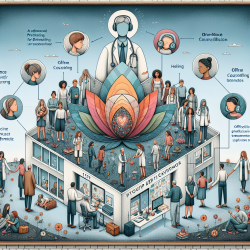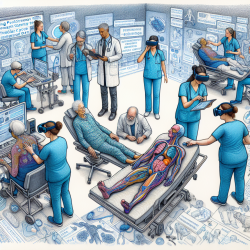Introduction
The integration of services for victims of child sexual abuse (CSA) is crucial in ensuring comprehensive care and support. The research article titled "Integration of Services for Victims of Child Sexual Abuse at the University Teaching Hospital One-Stop Centre" provides valuable insights into how a multidisciplinary approach can enhance outcomes for CSA victims. This blog aims to guide practitioners in improving their skills by implementing the outcomes of this research or encouraging further research in this area.
The One-Stop Centre Model
The University Teaching Hospital in Lusaka, Zambia, established a "One-Stop Centre" to provide integrated services for CSA victims. This model involves a multidisciplinary team comprising health workers, police, and psychosocial counselors, with legal assistance available as needed. The aim is to streamline the process of care and reduce trauma for the child and their family.
Key Outcomes and Recommendations
The establishment of the One-Stop Centre led to several significant outcomes:
- A comprehensive database was developed for better tracking and management of cases.
- Training programs using a Trainer of Trainers model were initiated to replicate the service in other areas.
- The follow-up rate for post-exposure prophylaxis (PEP) improved significantly, from 23% in a pilot study to 52%.
Practitioners can enhance their skills by focusing on the following areas:
- Adopting a multidisciplinary approach that includes medical, legal, and psychosocial support.
- Engaging in continuous training and education to stay updated on best practices.
- Developing and maintaining comprehensive databases for case management and research.
Encouraging Further Research
While the One-Stop Centre model has shown promising results, further research is needed to explore its applicability in different contexts and settings. Practitioners are encouraged to contribute to research efforts by:
- Conducting studies to assess the effectiveness of integrated service models in various cultural and resource settings.
- Exploring cost-effective strategies for implementing such models in low-resource environments.
- Investigating the long-term outcomes for CSA victims who receive integrated care.
Conclusion
The integration of services for CSA victims through a One-Stop Centre model offers a promising approach to improving care and outcomes. Practitioners can enhance their skills by adopting multidisciplinary approaches and engaging in ongoing research. By doing so, they can contribute to the development of effective, sustainable models of care for CSA victims.
To read the original research paper, please follow this link: Integration of Services for Victims of Child Sexual Abuse at the University Teaching Hospital One-Stop Centre.










